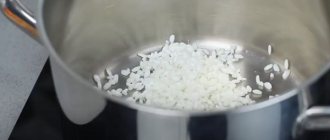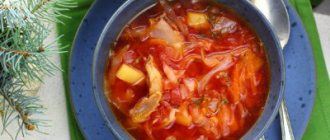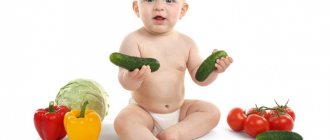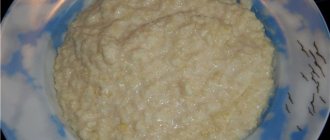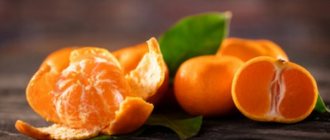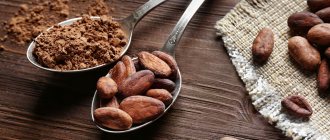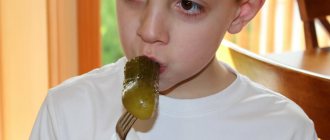With the birth of a baby, parents have many questions about proper and healthy feeding. There is advice from friends, relatives, and acquaintances floating around: some say that juices can be given already in the first month after birth, others, on the contrary, are against this drink for up to a year. In any case, you need to take into account the fact that all babies are completely different, and it is impossible to predict how the body will react. In any case, you should consult with your pediatrician when apple juice can be given to your baby.
Modern doctors do not recommend introducing juices into complementary foods too early. Despite the fact that these drinks are indeed healthy and nutritious, it is better to be late with the introduction than to hurry. During the first months, he receives all the necessary substances and vitamins for the baby’s growth and health promotion through mother’s milk. It should be remembered that the juice contains acid, which can injure the baby’s fragile stomach; first, you should introduce him to such a treat as porridge. They are more harmless than nectars and also have nutritional properties.
Artificial and natural feeding and complementary feeding
There are situations when the mother does not have milk or has very little milk. In this case, the child does not receive proper nutrition and naturally remains hungry. Then you have to switch him to artificial complementary feeding. When a child is kept on such a diet, the gastrointestinal tract is better prepared for various types of complementary foods (cereals, juices, vegetables, fruits) and at an earlier stage than with breastfeeding. Of course, nothing can replace mother’s natural breast milk; there is nothing better for the health, strengthening of the child’s body and immunity.
When breastfeeding, it is better to start feeding with vegetable purees. They are lighter and more easily digestible. Homemade purees made without sugar and salt will be the healthiest. Having assessed the baby’s reaction, you can proceed to the next step - introducing juice into the diet.
Pediatricians will tell you which juice to start complementary feeding with, but traditionally clarified nectars from green apples are given first.
When introducing juices and purees, it is necessary to carefully monitor the baby’s body reaction. If there are negative aspects, such as rash, itching, redness, indigestion, immediately stop giving these products and consult a specialist.
It is necessary to correctly introduce permitted foods into the baby’s diet, thereby he will receive a lot of benefits. First complementary foods during breastfeeding:
- improve digestion,
- strengthen the immune system,
- increase appetite,
- fill the body with useful minerals, vitamins, acids,
- remove harmful substances from the body,
- have a positive effect on the cardiovascular system,
- improve your mood and give you more strength.
For the first two to three months after the baby is born, the best food for him is breast milk. The baby is growing, the ventricle is strengthening, and accordingly, it can process more complex products than milk. In addition, it alone is no longer enough for the further development of the body. From now on, you can give your baby porridge, purees, and juices to try while breastfeeding.
How to make apple juice at home
If the time has come to introduce fruit water into your little one’s diet, you will have to prepare it yourself. After all, despite the colorful packaging in stores and the belief that “it can be given from birth,” store-bought juices are only allowed to a child after several years of his life. Also, at first you will need to dilute them with water, since they are more concentrated than homemade ones.
Since the drink must first be given to the baby in small portions, you will have to prepare it yourself, without kitchen devices that make life easier for housewives.
To prepare juice for infants, only green and yellow varieties of apples are allowed. You should forget about red ones for now, since food of such a bright color can cause an allergic reaction in your baby.
To do this, you need to wash the apple and peel it. Cut into small pieces, remove seeds. Grate the fruit on a plastic grater (if it comes into contact with metal, the fruit loses its beneficial properties).
Squeeze out the pulp with a spoon, and then place it in gauze folded in several layers.
First treats
How to introduce juice into complementary foods? This drink should be given to babies gradually in small doses. To begin with, a few drops for testing (a little less than half a teaspoon). For the first complementary feeding when breastfeeding, it is better to choose one fruit (vegetable), so the body will get used to it faster, and in the event of an allergic reaction, you can immediately determine what exactly caused it. The apple is considered non-allergenic and the most suitable fruit for children, since it grows in almost all regions.
How to prepare a natural drink for babies? The first complementary food, apple juice, is best made from green fruits. Wash the apple thoroughly, remove the peel and cut off a small piece, then grind it into a paste and squeeze out the nectar from the resulting mixture. The resulting drink is too concentrated and will be a heavy burden for the baby. It should be diluted with distilled water one to one.
In addition to the types of juice, the age of the baby, when it is necessary to give them, there are other rules:
- The first dose of the administered drink should consist of 3-4 drops; on this day it is recommended not to try the juice again. If the reaction is normal, then the dose and number of doses can be doubled. Over the course of a month, the dose may increase to 40-50 ml.
- After the first intake of the drink, you should carefully monitor the body’s reaction; if excessive regurgitation begins, diarrhea occurs, a loud rumbling of the stomach is at least one sign, then the administration of the juice should be stopped and returned to it a little later.
- The juice should be given to the baby immediately after preparation; there is no need to leave the drink to “air”.
- You should not introduce fruit drinks during illness or immediately after it.
- Apple juice for infants should be given after the main meal; such drinks will be difficult to digest on an empty stomach, and it is also an additional source of nutrition. It is better to give the juice in the morning, so there is more opportunity to observe the reaction during the day.
- During the cooking process, it is better not to use an iron fruit grater, as oxides are formed that damage the gastric mucosa.
- Pediatricians do not recommend giving juices with pulp to children under one year old; they contain more dietary fiber.
The sequence of introducing juices into complementary feeding for infants:
| Lure | Juice | Benefit |
| 1 | Apple (from green apples) | Does not cause allergies, improves immunity, is easily digestible |
| 2 | Pear | Increases immunity, improves the digestive process |
| 3 | Peach | Strengthens the heart, normalizes liver function |
| 4 | Apricot | Contains gut-strengthening properties that support nerve and bone tissue |
| 5 | Plum | Strengthens intestinal motility, contains organic acids and is rich in vitamins |
| 6 | Carrot | Improves appetite, promotes digestion, improves vision, strengthens teeth |
| 7 | Pumpkin | Improves metabolism and gastrointestinal function |
If a child suffers from constipation, it is recommended to start introducing prune juice first, since it has a laxative effect, and then apple juice.
After trying natural juices, you can take store-bought ones. It is necessary to pay attention that the nectar is specifically for small children under one year old and does not contain hidden components. To begin with, the drink should also be diluted with clean water, adding a small amount. If time allows, it is better to prepare a natural drink at home without preservatives, dyes and sugar.
Choosing the first juice: how?
How many mothers, so many opinions. Some are sure that juices are a source of healthy carbohydrates because they contain natural sugar, while others are convinced that juices are pure preservatives.
FrutoNyanya is a leader in the production of children's juices; for many years, together with pediatricians, allergists and nutritionists, it has been studying the issue of the benefits of juices for babies in the first year of life. We simply do not have the right to let down millions of our little consumers, and therefore, with all responsibility, we want to answer 5 juicy questions.
Why is juice a First Choice product and must be introduced in the first year of life?
Expert opinion
Juices are among the products that are a source of nutrients: fructose, organic acids, potassium, and some juices - vitamin C. Sergey Viktorovich Belmer
Doctor of Medical Sciences, Professor.
The juice contains beneficial microelements and natural sugars, which are a source of energy for the baby. In addition, juice allows you to diversify your child’s diet and introduces him to new tastes. The main thing to remember: in the nutrition of young children it is necessary to use only industrially produced children's juices.
What does juice contain, besides natural fruits and berries?
The requirements for juice products from fruits and vegetables in our country are very strictly regulated by the Technical Regulations of the Customs Union. FrutoNyanya juices and nectars are made from natural fruits and vegetables. The amount of other food ingredients that can be added to juices and nectars is very limited. For example, juices contain specially prepared water. Full information about the composition is given on each package.
Is there sugar added to baby juice?
All FrutoNyanya juices are produced without added sugar. They contain only natural, natural sugars of the fruits from which they are made. We try to use sweet varieties of fruit, since children a priori prefer sweet tastes.
Why does juice last so long?
Juices and nectars undergo short-term sterilization, which allows for maximum preservation of all beneficial substances. Then, under aseptic conditions, they are bottled into sterile packaging, which is completely sealed, impenetrable to light and air, which is very important for preserving useful substances that can be destroyed by sunlight. It is these packaging properties that allow you to preserve all the benefits of natural juice for a long time - up to 1 year.
Where do the raw materials for juice production come from?
Our plant is located in Lipetsk, and we maintain partnerships with farms in the Lipetsk region that grow apples, plums, pumpkins, carrots, etc. Apricots, peaches and some apples come to us from the Krasnodar region. Bananas, oranges and other tropical fruits, of course, are purchased in the countries where they grow. We carefully monitor how our suppliers grow vegetables and fruits, how they harvest and store the crops.
The raw materials received at the plant are checked for physicochemical, organoleptic (that is, taste), microbiological indicators, as well as safety indicators. A batch that does not meet the quality standards of at least one of these indicators is not accepted for production.
Should you give juice to your baby or not? The question is purely individual. A specialist will advise you on what is best for your baby.
The manufacturer’s task is to produce a healthy and safe product, balanced in all the necessary characteristics, and FrutoNyanya has been doing an excellent job for many years – helping people to be healthy from childhood.
Negative aspects of early introduction of juice into infant feeding
Modern pediatricians do not recommend giving juices at an early age up to one year. This is explained by a number of reasons. Firstly, they negatively affect the stomach and upset the digestion process. Secondly, fruit drinks contain a significant amount of sugar; subsequently, a child, having tried sweets, may refuse healthy foods such as cereals and vegetable purees. Thirdly, they can cause allergies. Fourthly, one such drink is not enough to supplement the baby’s daily need for vitamins and microelements.
Before introducing a fruit or vegetable drink into a baby’s daily diet, you should remember that the best and healthiest food for a newborn is mother’s milk. Before starting nectar administration, you should consult your pediatrician. If you have the opportunity to breastfeed, you should do so for as long as possible.
Your pediatrician will teach you how to make and how to give juices, nectars, and purees as complementary foods. Other parents, relatives and acquaintances will also advise, however, you do not need to follow all the advice, each child is unique, and all his characteristics must be taken into account.
When a baby can be given apple juice, only parents decide, taking into account medical recommendations. This is a serious step in the life of both parents and child.
When to enter
When can you start giving your baby apple juice? If earlier mothers gave juice to their babies almost from the age of one month, now pediatricians do not recommend introducing the child to it until 8-9 months of age. Many of them are convinced that the baby will not lose anything if you give him fresh juice after one year.
During the period of breastfeeding, natural juices prepared at home can only be drunk by nursing mothers. You will benefit from them much more than the baby’s body, which is unprotected from aggressive components.

